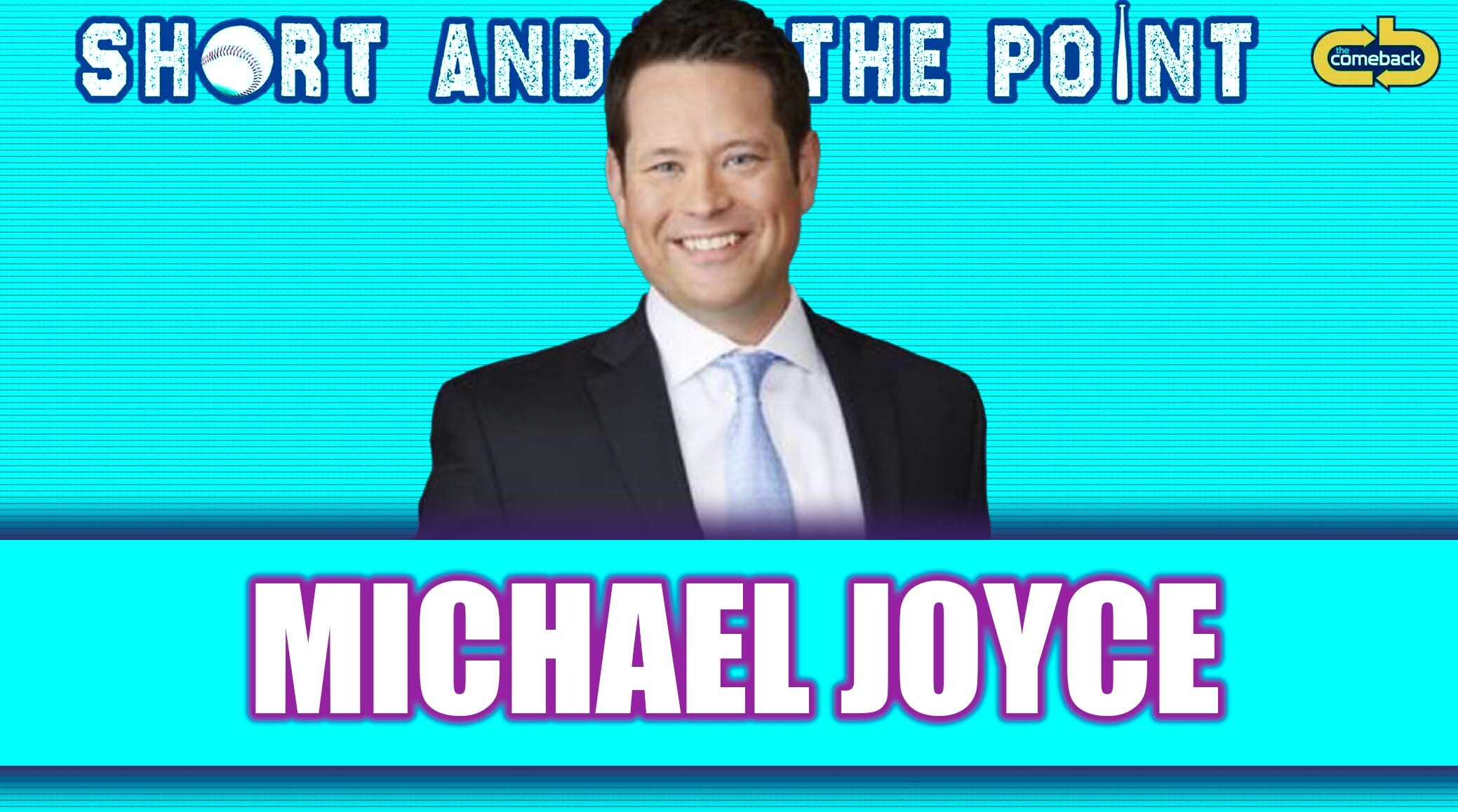Broadcast innovations are an interesting tightrope, with some new approaches immediately embraced, some gaining acceptance over time, and some abandoned after poor reception. Adding anything to a broadcast involves risk, not just in the time spent coming up with it but in what reaction it ultimately receives. And many productions on a variety of networks have different levels of tolerance for that risk.
ESPN’s MLB broadcasts have often pushed the envelope there. We’ve seen that with the decision to bring in an always-present K-Zone strike zone graphic in 2015, with their regular embrace of mic’d up players and in-game interviews with them over the past few seasons, and with other moves. And now we’ll see it with an (almost)-always addition of win probability metrics to the in-game scorebug, as ESPN vice president of production Phil Orlins spoke about on a media call Thursday (a full transcript is available here).
“One of the things that we’ll be doing this year for the first time, we will add win probability to our miniboard,” Orlins said. “It will be up there 100 percent of the time, or 98 percent of the time, during the telecast.”
This will primarily be seen on ESPN’s Sunday Night Baseball, their main MLB broadcast package now. But it will also show up on other ESPN MLB broadcasts such as next week’s Seoul Series, special Sunday games from Mexico City in April and London in June (with it revealed on this call that the latter will be called by Michael Kay and a to-be-named analyst), and their playoff coverage. A shared example of what this will look like can be seen at the top of this post, above the MLB on ESPN logo.
There are several different versions of win probability out there on different sites. The one here will come from ESPN’s in-house stats and analytics teams. Orlins said win probability was a logical addition for these broadcasts considering how present it is in the sports discourse these days.
“I think it just speaks to the way people think about sports right now, the consciousness of it, it’s on every website,” he said. “People who obviously have a wager on the game have maybe a little more thought about it as well. After a lot of debate, we want to embrace the differentiation there.”
He said he expects it to not receive complete support at first, though, as change always provokes some backlash.
“You know, it will cause some reaction, and it will not probably at the outset be mostly positive reaction. But I think over time it will connect with the psyche and intention of the viewers.”
But Orlins said later in the call that he’s quite confident this will eventually win over viewers.
“I’m 100 percent sure that backlash will diminish over time and people will get used to it and ultimately begin to expect it. I’m not a psychologist, so I guess I should probably be more careful about pretending to analyze the human psyche, but change is not easy on people.
“People think about their team’s chances of winning all the time. That doesn’t necessarily mean they won’t have emotional thoughts when they see their team only has a four percent change to win or something like that, by mathematical equations. So I do expect some of that reaction.
“But I think it’s part of the psyche of the viewer. I think it already is, and will become more a part of the future and how people think about the game.”
Orlins compared this to the K-Zone move, which drew a lot of immediate criticism but was eventually embraced. He said they went ahead with K-Zone knowing that there would be that pushback.
“It’s not as front-and-center as the decision to use K-Zone live in 2015, which if I did that by a mathematical poll of people’s response, that would never have been on the air. But here we are with it being on every telecast, not just ours. So I think sometimes you’ve just got to take a shot at what you believe in.
He also spoke about the path to regular in-game interviews with mic’d up players, and said that was a bold move that’s worked out well for the broadcasts despite some initial pushback.
“There are kind of three pieces to it. The league support, the Players Association support, and just as importantly the visibility and relationships of our broadcast team, and probably Eduardo [Perez] more than any of them.
“It’s kind of been forgotten, but we did it first during the pandemic, even had it in playoff games that year in 2020. Then it slipped away in 2021. It became a pretty large discussion between the league and the Players Association. They finally kind of settled on a plan to move forward in 2022. We’ve had it ever since then.
“But the league is — like a lot of things, not everybody loves that either, like I was saying about the other stuff. Having said that, I think the league gets it. It’s been a huge statement that’s positioned MLB as a pretty progressive sports league, which is not necessarily the perception of the sport before that, then follows up with the rule changes and all that.”
Orlins said MLB’s willingness to embrace rule changes and broadcast changes is important, and not always recognized.
“I just think the way that people see and think about baseball as a sport that’s willing to change, take chances, risks, move forward, appeal to young people, it’s just dramatically changed. I just think that was an important step to it.”
Orlins said the players’ support there has been crucial, and it’s come because of how natural those conversations feel.
“And the Players Association, once they’re on board, they’ve been great. They invited me down, now over a year ago, to speak with all their team representatives at their business meetings in November. It was just a great group. They were really enthusiastic about it. They get that it shows them in a positive light.
“They’re a younger group of players that have online presences and have some degree of care about how they’re perceived or heard in the first person. They’ve really been a great supporter of it. Through really almost — I don’t want to say day one, but once it got off the ground and had success.
“The craziest thing, they feel, and the research has shown — it’s a credit to Karl [Ravech] and all the announcers — but it seems to resonate with our viewers with like an organic and authentic experience. At least that’s what our research shows. It’s kind of extraordinary playing baseball in the middle of the field with an ear piece and a microphone, and the viewers feel that’s organic and authentic.
Orlins said a huge part of that success comes from the way the announcers have figured out when to interject and when not to.
“I’m trying to think what’s actually organic and authentic about it,” he said. “But to their credit, like the conversation and laying out when the pitch is thrown and just the way it’s been handled, actually feels more natural and seamless than what I just described maybe should feel.”
ESPN MLB producer Andy Jacobson added that the organic part of that often comes from discussions about matters beyond the field, with many of those moments really resonating with viewers.
“When Phil and I are in the control room during the show and we have a guy mic’d up and the guys are talking to them, Phil and I are often — when we’re talking to them, we love the flavor stuff, the flavor of ice cream, Michael Harris telling us about his bandana collection. That probably is the organic piece to it.
“We’re learning about these guys. Maybe the diehard Braves fan knew that already, but we’re taking it large scale. That, to us, is when you peel back a layer. You’re not just talking about defensive positioning. Now you’re talking about who these guys are, what they’re about, get them to smile, get them to loosen up a Little bit.
“Corbin Carroll, kind of known as a guy who’s pretty serious, takes his work seriously, like they all do. But you see some of these guys, and you can see that kind of layer, just that relaxed feel, and they’re just open and telling us about their lives. That’s, to me, the ultimate win when that happens. It happens more times than not. It happens most of the time because of the relationships and the right questions most of the time.”
Orlins said viewer questions play a role in that too, with viewers often wanting to know about off-field subjects.
“We also always — we select them obviously from a large pool of sometimes sarcastic suggestions, but we always take, we always include a couple of viewers questions from X, or Twitter,” he said. “Just sometimes there are things that viewers ask and want to know that are more comfortable coming from a viewer, so to speak, than it is from a broadcast team. And the viewers — yeah, they want to know about your best or worst teammate, who’s got the best dance moves. It’s amazing. The personal questions outweigh ‘What do you look for on a 3-2 count?’ by about 99 to 1.”
The latest
- Exclusive: Famed travel baseball coach Nelson ‘Coach Nelly’ Gonzalez talks partnering with Perfect Game for podcast
- Jason Kelce hire solidifies ‘Monday Night Football’ as ESPN’s premier program
- Paul Bissonnette and Anson Carter on covering former NHL on TNT colleague Rick Tocchet: ‘It’s been easy to pump his tires.’
- Exclusive: Michael Davies is stepping back from regular Men in Blazers appearances
“Emotional connection is important, and it’s important positioning for ESPN and our broadcasts to make that connection with viewers. That doesn’t always mean it’s going to be 100 percent positive connection in all circumstances.”
In response to a different question about heading into the second season of the MLB pitch clock, Jacobson had an illuminating answer on how both the broadcast and viewers adapted to that quickly. Jacobson didn’t specifically relate that to win probability, but it’s notable for his comments on changing broadcast and viewer habits.
“It’s almost like as a viewer you don’t even think about it any more,” he said. “We obsessed over the clock all offseason last year, wondering how it would impact us, and it did, it sped things up a little. You can’t waste replays, you’ve got to get to the best look, things of that nature, finding places to squeeze content in outside of just game stuff, but I think it’s amazing in one year’s time how it’s become just normal. …It seems very seamless to me already, and I’m looking forward to year two having experience in year one. I think we’ve already kind of adjusted and know what to expect and how to attack it.”
And Orlins said overall, the MLB on ESPN focus is on being bold and trying to innovate.
“We always want to be a little more aggressive. I’m not saying that we want to be completely off the rails from what people traditionally expect from a broadcast. But if you want to put us on a bell curve, we want to be on the more progressive end of that.”







